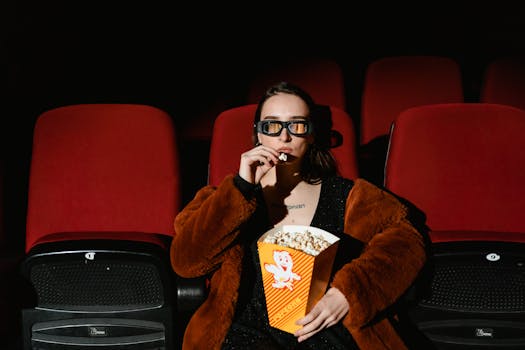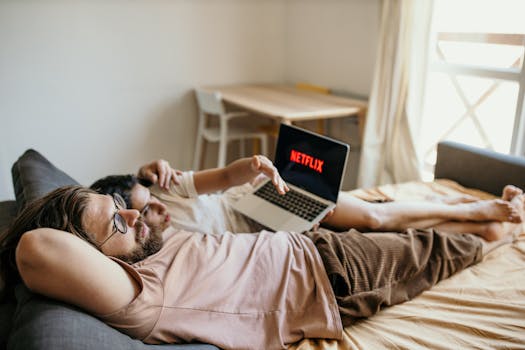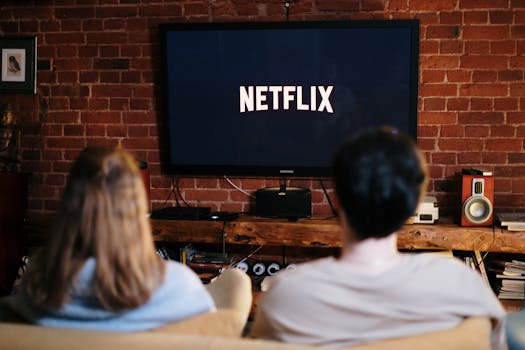Movies
How Editing Turns Raw Footage Into Movie Magic: The Power of Film Editing
Explore how film editing transforms raw footage into unforgettable movies. Learn the hands-on steps, emotional crafting, and secret tools that editors use to shape cinema into movie magic for every viewer.
Advertisement
Anyone who’s watched a behind-the-scenes on films has seen the puzzle-like way editors arrange shots. Film editing doesn’t get the glamor of acting or directing, but it’s at the heart of movie magic.
Scenes are shot out of order, actors flub lines, and lighting changes between takes. Film editing bridges these raw elements, seamlessly bringing narrative, rhythm, and mood to stories in ways viewers never see but always feel.
Get ready to see the hidden craft that shapes what you love about movies. From first frame to final cut, we’ll walk through hands-on choices and concrete rules that give movies their unique emotional power.
Stitching the Story: Step-By-Step Decisions for Cohesive Narratives
A movie only makes sense when every shot links together with precise logic. Film editing first demands organizing hours of footage by the director’s script and goals.
Experienced editors begin by assembling a rough cut, piecing together scenes as scripted. This initial version provides the framework for each refining step that follows.
Scene Selection: Matching Footage to Story Needs
Editors watch every take, flagging authentic moments and subtle performances. Each choice impacts pacing and tone, from energetic action cuts to hushed dialogue pauses.
Take a romantic scene: editors might favor a gaze or unscripted giggle over a perfect line, prioritizing chemistry on screen. Their responsibility is to maintain what feels real for viewers.
Using instinct and experience, good film editing keeps stories clear and characters authentic—never letting technical perfection override emotion or narrative purpose.
Timeline Construction: Going Beyond Chronology
Once scenes are chosen, editors experiment with order. Re-arranging, intercutting, and even omitting scenes can uncover new narrative tension or surprise for the audience.
Great film editing might flash back mid-story, as seen in films like “Memento”, or compress time to intensify action, like a training sequence montage. These techniques heighten engagement by controlling what viewers know, and when.
Reviewing their timeline, editors ask, “Does this version flow, or confuse?” They revise again, cutting for maximum viewer clarity and emotional punch.
| Editing Step | Key Decision | Impact | What To Try Next |
|---|---|---|---|
| Rough Cut | Align with script | Maintains story logic | Review with director for big-picture flow |
| Scene Selection | Choose best takes | Genuine performances on screen | Test alternate takes for subtext |
| Timeline Construction | Sequence scenes | Controls timing and suspense | Insert/Remove for pace |
| Sound Bridging | Smooth transitions | Prevents jarring jumps | Layer overlapping audio |
| Polish & Review | Trim excess | Sharpen rhythm | Screen to fresh viewers for feedback |
Sculpting Emotion: Cutting for Tone, Rhythm, and Reaction
When you want viewers to feel tension, humor, or sadness, film editing becomes the director’s emotional toolkit. The rhythm of cuts, length of shots, and reaction shots all guide the audience’s heart.
Editors balance dialogue, music, and visuals to create the right atmosphere—think lingering close-ups for romance or rapid cuts for panic.
Working With Director’s Intent
The editor checks in: “Should this fight scene feel brutal or balletic?” The director’s vision anchors their choices. Consistency in tone preserves the film’s identity.
If the editor notices a comedic beat getting lost, tightening the timing between lines can boost laughs. These are fine-tuned in collaboration with the filmmakers.
- Hold reaction shots to give viewers time to process a character’s emotions, making big moments resonate more and cueing the intended mood.
- Shorten pauses between lines for energetic, snappy dialogue, intensifying comedic or argumentative exchanges and keeping the story brisk.
- Use lingering shots in serious moments to build unease, letting viewers absorb details and anticipate what’s next. This heightens suspense through controlled pacing.
- Cut quickly during action scenes to mimic adrenaline, increasing heart rates and drawing audiences directly into the chaos of the film’s world.
- Fade in or out of scenes for smooth emotional transitions, supporting gentle mood changes and signaling shifts in tone without abrupt disruption.
Great editors consciously adjust scene rhythms to pull viewers into a carefully shaped emotional arc, subtly supporting the script’s intent while avoiding distraction.
Pacing for Genre
Different film genres require distinct cutting tempos. Action calls for rapid transitions, while dramas lean on lingering shots. The pacing makes the genre resonate authentically.
Editors match timing to genre, invoking the right mood for every scene. A horror film may use unpredictable pauses to create dread, while a comedy lives on tight, sharp exchanges.
- Time jump cuts in thrillers for escalating tension, building a sense of urgency and risk as scenes race forward unpredictably.
- Choose long, single takes in dramas to let emotional depth unfold, inviting viewers into the characters’ private moments without interruption.
- Experiment with overlapping dialogue in ensemble scenes, layering voices to replicate real-life chaos or intimacy, drawing the audience further in.
- Select music cues that complement visual rhythm, supporting atmosphere and guiding the emotional journey, from swelling orchestral scores to sparse ambient sound.
- Alternate wide and close shots in comedies for visual punchlines, playing with perspective to underscore jokes and physical humor for maximum impact.
By adjusting every cut, each genre delivers the precise feelings audiences expect, harnessing film editing as a tool for powerful storytelling.
Transforming Performances: Giving Actors New Life in the Edit Room
Film editing grants actors a second stage to shine. Choices in timing, reaction, and shot selection polish raw performances, bringing focus to authentic emotion that viewers remember.
An editor might combine takes, smoothing over falters while enhancing the chemistry between characters. Even a small pause, trimmed or extended, can reshape how audiences see an entire role.
Salvaging Difficult Scenes
Raw footage rarely gives perfect results. Maybe a child actor glances at the camera, or weather ruins a take’s tone. Editors use cutaways—reaction shots, hands, scenery—to hide these slipups.
For example, while editing a dialogue-heavy courtroom drama, the editor noticed abrupt energy drops. By cutting to jury reactions, the scene stayed tense and immersive.
Practical fixes like these show that skillful film editing can save problematic footage, preserving momentum and believability even under less-than-ideal conditions.
Building Chemistry and Tension
Shaping the back-and-forth between actors means more than lining up words. Editors study facial expressions, micro-reactions, and body language for glimpses of genuine connection.
When two characters are meant to fall in love, an editor times glances so one character’s interest lands right as the other is vulnerable, amplifying on-screen chemistry.
This careful dance allows editors to create palpable tension or warmth, making character arcs believable and deeply felt through the language of film editing.
Seamless Transitions: Creating Visual and Sonic Flow
What separates professional cinema from rough student films? Especially, smooth transitions. Film editing means each cut maintains continuity—viewers forget they’re watching multiple takes spliced together.
Well-executed transitions blend visuals and sound, guiding attention and keeping viewers anchored in the film’s reality. Improper transitions create confusion or break immersion instantly.
Visual Continuity Techniques
Editors study frame composition, lighting, and actor movement so each shot flows naturally into the next. Matching eye-lines and movement is crucial for sustained immersion.
In one production, an editor noticed a door opening from different sides in back-to-back shots. By flipping a take horizontally, continuity was restored without reshooting.
Tools like match cuts—where shape or motion matches across consecutive scenes—create visual bridges. These micro-adjustments make the viewing experience feel effortless and fluid.
Sound as a Bridge
Sound isn’t just background—it’s a secret glue that connects scenes. Editors use audio crossfades, musical transitions, or ambient noise layers to mask visual jumps.
In a documentary, an editor ramped up city noise across scene boundaries for realism, making the urban setting feel unbroken between interview shots taken hours apart.
Film editing blends auditory cues seamlessly, allowing the audience to focus on story instead of technical mechanics.
Creative Juxtaposition: Heightening Meaning Through Contrast
Editors discover deeper story layers by contrasting shots, settings, or dialogue to spark new meaning. Film editing becomes an active storyteller, not just a technician’s task.
Combining unrelated images can evoke emotion, build connections, or create irony—powerful effects that emerge only after the footage is assembled.
The Kuleshov Effect in Action
The Kuleshov Effect shows that viewers link meaning between two contrasting shots, even if the context isn’t explicit. A neutral face followed by food makes a character appear hungry; cut with a grave, the same face seems mournful.
Editors harness this trick by deliberately pairing evocative images. In thrillers, a calm smile intercut with a car crash can feel sinister—viewers fill the narrative gaps themselves, deepening engagement.
Each cut isn’t just a technical move but a choice that steers interpretation, emotion, and even memory long after the credits roll.
Unexpected Pairings for Impact
Bringing unlikely elements together is an editing staple. In musical sequences, editors might contrast quiet close-ups with sweeping crowd shots, magnifying emotional stakes and bridging scope.
For documentaries, an interview paired with archival footage can shift meaning. A speaker’s distant look juxtaposed with defiant protest scenes might transform nostalgia into resolve.
Film editing is filled with these narrative pivots. Editors experiment, shuffle, and re-watch, ensuring every juxtaposition adds depth, surprise, or a new way of seeing the story.
Fine-tuning for Audience Engagement: Testing, Trimming, and Iterating
Before release, editors refine and test their work to maximize audience engagement. Armed with fresh feedback, film editing returns to the smallest moments: a sigh, a glance, a half-second beat.
Nothing goes unchecked—every cut is considered for flow, clarity, and emotional effect on first-time viewers who step into the film without prior knowledge.
Audience Test Screenings
An early screening might reveal confusion during a time jump or emotional disconnection between main characters. Observing audience reactions—laughter, restlessness, silence—guides final cuts.
One editor recalled trimming 10 seconds from a climactic speech after test viewers seemed distracted, focusing the sequence and earning a stronger emotional payoff.
Each iteration ensures that real reactions, not only theory, shape the final cut to resonate with wider audiences and deliver the filmmaker’s message clearly.
Iterative Micro-Editing
Polishing for theatrical release means scrutinizing everything from music cues to the space between lines of dialogue. Editors apply tips such as “cut faster by two frames” or “pause three beats longer.”
In high-tension sequences, film editing might chop milliseconds to quicken pace, while in emotional farewells, it lingers just enough to let tears settle in the theater.
This attention to detail means audiences don’t see the edits—they simply experience a seamless, vivid story. It’s the magic touch that turns good movies into classics.
Final Thoughts: Why the Editor’s Work Defines Movie Experiences
Film editing invisibly guides how viewers feel, think, and remember a cinematic story. Every frame, sound, and transition is shaped with intention, not left to chance.
Without the editor’s guiding hand, even the strongest performances or striking visuals can fall flat. It’s the editor who transforms hours of scattered footage into the movies that linger long after the credits.
Appreciating film editing deepens our understanding of what makes cinema compelling and memorable, revealing a craft as artful and essential as any in filmmaking.
Trending Topics

Hidden Movie Endings That Completely Change the Story
Discover hidden movie endings that completely shift meaning, twist expectations, and make audiences rethink the story’s truth.
Keep ReadingYou may also like

The Role of Color Palettes in Visual Storytelling: Cinematic Techniques in Focus
Explore color palettes in film that shape mood, express emotion, and create powerful visual signatures that endure.
Keep Reading
Film Genres Explained: From Noir to New Wave
Understand film genres from noir’s shadows to New Wave’s style, tracing how storytelling traditions evolved across generations.
Keep Reading

